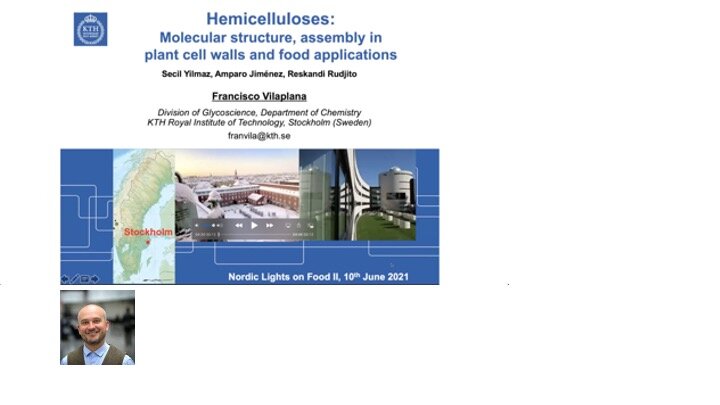VIDEO - Northern Lights on Food II workshop - Hemicelluloses: Molecular structure, assembly in plant cell walls and food applications with Francisco Vilaplana


VIDEO - Northern Lights on Food II workshop - Hemicelluloses: Molecular structure, assembly in plant cell walls and food applications with Francisco Vilaplana
Speaker: Francisco Vilaplana, KTH, Royal Institute of Technology, Sweden
This lecture was part of the workshop, Northern Lights on Food II, organised on June 9-11, 2021, by the LINXS working group Food, with support from Formas.
Abstract
Plant cell walls constitute the main renewable resource for the development of bio-based energy and materials, and they are a fundamental source of dietary fibre in our diets (e.g. in cereals, pulses, fruits and vegetables). The heterogeneity and recalcitrance of plant cell walls is fundamental to the biological function, but these pose large challenges for their exploitation in material and nutritional applications. Plant cell walls constitute a fascinating biological material with controlled hierarchical organization from the molecular to the macroscopic level, consisting mainly of polysaccharides (cellulose, hemicelluloses and pectins), proteins and polyphenolic compounds. Hemicelluloses act as a link between the cellulose, protein and phenolic components in cell walls and regulate the aggregation of cellulose microfibrils. Hemicelluloses are a family of complex biopolymers with a b-(1®4) backbone of neutral sugars (glucose, xylose and mannose), but decorated with an array of neutral sugar and uronic acid substitutions and can be chemically-modified by acetylation. In this presentation we will cover the recent advances in understanding the molecular structure of hemicelluloses and their role in the organization of plant cell walls, with a focus on cereal cell walls. This requires the combination of advanced biochemical methods based on mass spectrometry, with solid-state biophysical approaches, including small angle scattering techniques. This fundamental information on the structure and assembly of hemicelluloses can be used for the development of new sustainable processes for their extraction and their subsequent use in functional food
ingredients with tailored properties and structures. This can be directly applied to the valorization of by-products from the agricultural sector (e.g. cereal bran and fruit pulps), which constitute a rich source of dietary fibres with bioactive properties for their engineering in new food products.
